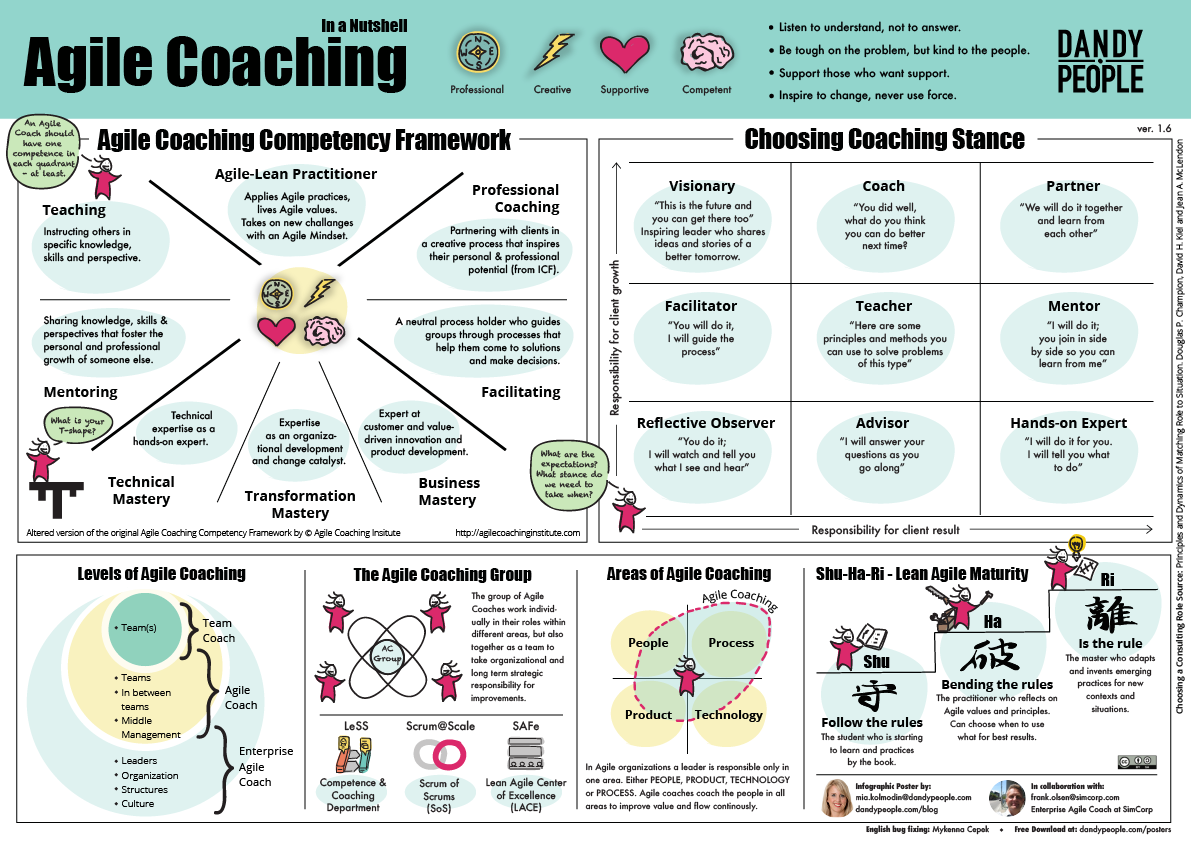
Agile coach or Scrum master illustration by Thea Schukken
In my first story ‘User Experience is …’ I promised that …
"over the course of a few stories, I’ll try and cover a few of the sciences we draw upon in our art as a creative community to create engaging experiences."
In my last story I reflected on the techniques, methodologies and principals used in both the User Experience and Service Design fields and wrote how User Experience is … Service Design.

Agile coach or Scrum master illustration by Thea Schukken
Over the course of exploring what User Experience is and means in 2019, I’ve hinted about the different roles that UX Designers need to take on. I highlighted this when I talked about the much debated subject of UX involving product ownership.
But this isn’t the only role that modern UX Designers have to traverse. After speaking with a number of UX Designers in our worldwide community, they often find themselves traversing across Product Owner, Designer, Researcher and Agile Coach within one day.
And we as designers don’t need anything different than anyone else in product teams:
So it’s no wonder that we are empathetic of when these things are absent in teams and look to introduce these ways of working to improve the team, but also enable us to do better work. As we’re involved more actively in some of these needs, it makes sense that User Experience in part is Agile Coaching.
A lot of the work that we have to do is collaborative and we have to work with people and teams to refine designs. We have to:
So it’s natural that a lot of these skills cross over.

Scrum Mastery is more than just Agile Coaching, Joshua Partogi
Agile is no longer just for start ups but is the mainstream for multinational companies. It has matured and reached every corner of the digital field. Due to its spread, the promises of agile (speed to market, lower release costs) aren’t always being met. It’s as if the story of agile has been told by Chinese whispers. Potentially leading to substandard products being released too early and expensive rework.
User Experience designers are often at the forefront of this balance and compromise. Needing to be pragmatic and not being a purist to make sure that what is delivered and released to users, makes sense, provides value and provides a good experience that can be built on in future sprints. So that the team can test and learn and understand what users want and need to inform the backlog moving forward. This shouldn’t be at the expense of sensible assumptions and realistic expectations so that a suitable user experience is achieved in the first place, but it doesn’t necessarily need to be gold plated to start with. This is often the tightrope walk that Agile Coaches often tread as well.
A key component of agile is the planning of sprints. The UX Designer needs to not only understand what the ideal experience is to communicate it to the team is trying to achieve, but also what the first slice of that experience is meaningful for a user. This could lead to the User Experience building up the experience over multiple sprints in order to be able to release other prioritised experience builds or new features to reduce cost of delay but also build on the experience for the user.
The UX Designer will need to understand and plan in for the team stories which get an experience to market quickly, understanding that the product doesn’t need to be all signing and dancing, instead identifying the key features and experience to hook the user and validate the core value proposition.
It’s not only the job of the Agile Coach to understand this compromise but also the UX Designer to bring this to life for the team and also the stakeholders, so they can see how the experience or functionality builds in each sprint.
The UX Designer will also help stakeholders understand what they will get and when by bringing builds to life in prototypes. This often is the catalyst for conversations around priorities, but also can be used to test with users, to understand what is a priority from a stakeholder and also a user point of view, so that this can inform the backlog and priorities of sprints, builds and releases to the user, before engineering teams write a line of code.
For UX Designers we need to embrace this new kind of relationship with the teams we work with and also our stakeholders. With a focus on collaboration and partnership to work with everyone who has an interest in the product to raise their understanding through the process and journey.

Agile Coaching in a Nutshell, Dandy people
But as mentioned by both Joshua and Mia, Agile Coaching is more than just facilitation of the scrum ceremonies. This is where the majority of overlap is with UX Designers, but Agile Coaching also covers:
These skills could still be demonstrated by UX Designers, but maybe not as deeply as Agile Coaches. Where Agile Coaches are able to focus on one of these mastery skills, designers also have to focus on the creative and design skills needed to bring the ideas to life.
Next up in the series I’ll be looking into something that’s very closely related to Agile Coaching and something I’ve mentioned a number of times in this story, value and how User Experience is … providing value.
Originally written as part of the ‘User Experience is …’ series for UX Collective.